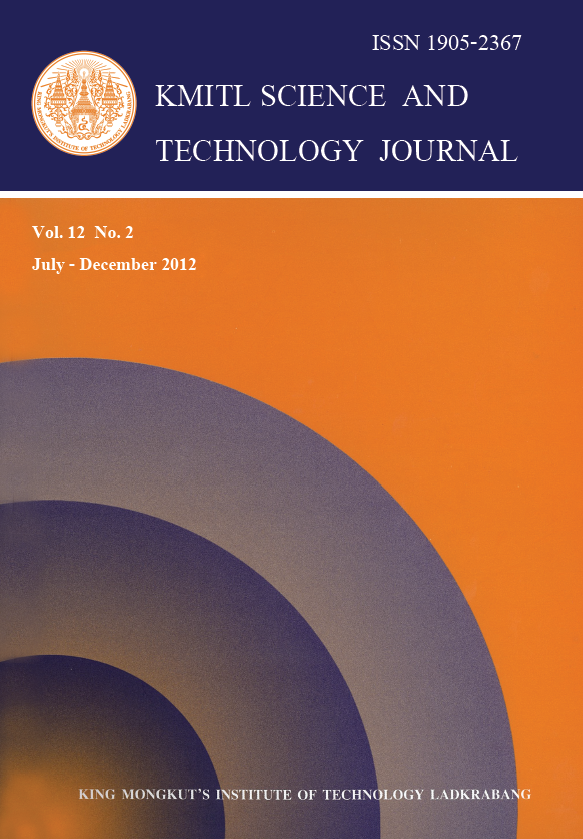Downscaling Geopotential Height Using Lapse Rate
Main Article Content
Abstract
In order to utilize the output from a global climate model, relevant information for the area of interest must be extracted. This is called "downscaling". In this paper, the derivation of a local geopotential height in terms of lapse rate is presented. The main assumptions are hydrostatic balance, perfect gas, constant gravity, and constant lapse rate. Two sets of data are required for this method, simulation outputs from the Education Global Climate Model (EdGCM) and the observed data at the points of interest (Chiangmai, Bangkok, Ubon Ratchathani, Phuket and Songkla). The results show that downscaling of the geopotential heights by using lapse rate dynamic equation are closer to the observed data than the geopotential heights from EdGCM.
Keywords: Downscaling, Geopotential height, Lapse rate
E-mail: dusadee.suk@kmutt.ac.th
Article Details
Copyright Transfer Statement
The copyright of this article is transferred to Current Applied Science and Technology journal with effect if and when the article is accepted for publication. The copyright transfer covers the exclusive right to reproduce and distribute the article, including reprints, translations, photographic reproductions, electronic form (offline, online) or any other reproductions of similar nature.
The author warrants that this contribution is original and that he/she has full power to make this grant. The author signs for and accepts responsibility for releasing this material on behalf of any and all co-authors.
Here is the link for download: Copyright transfer form.pdf
References
[2] Castro, C. L., Pielke Sr, R. A. and Leoncini, G., 2005. Dynamical downscaling: Assesssment of value retained and added using the Regional Atmospheric Modeling System (RAMS),Journal of Geophysical Research, 110, 1-21.
[3] Nielsen-Gammon, J., 2000. Weather Observation and Analysis. Course notes ATMO251,Texas A & M.
[4] Dejmal, K. and Kratochvil, V., 2010. Interpolation methods of weather phenomena, WSEAS Transactions on Environment and Development, 2(6), 144-152.
[5] Jade, Sr. and Vijayan, M.S.M., 2008. GPS-based atmospheric precipitable water vapor estimation using meteorological parameters interpolated from NCEP global reanalysis data,Journal of Geophysical Research, 113, 1-12.
[6] Willmott, C.J., 1995. Climatologically aided interpolation (CAI) of terrestrial air temperature, International Journal of Climatology, 15, 221-229.
[7] Mendes, V.B., Prates, G., Santoa, L. and Langley, R.B., 2000. An evaluation of the accuracy of models for the determination of the weighted mean temperature of the atmosphere, Proc.ION Natl. Tech. Meet., C4, 433-438. (Available at http://w3.uagl.pt/gprates/ION2000.pdf)
[8] Wang, J., Zhang, L. and Dai, A., 2005. Global estimates of water-vapor-weighted mean temperature of the atmosphere for GPS applications, Journal of Geophysical Research, 110,1-17.
[9] Chandler, M. and Sohl, L., 2011. NASA Climate Modeling and Data Application, Goddard Institute for Space Studies, New York.
[10] Vallis, G., 2006. Atmospheric and Oceanic Fluid Dynamics Fundamentals and Large-Scale Circulation, Cambride, pp. 124.


